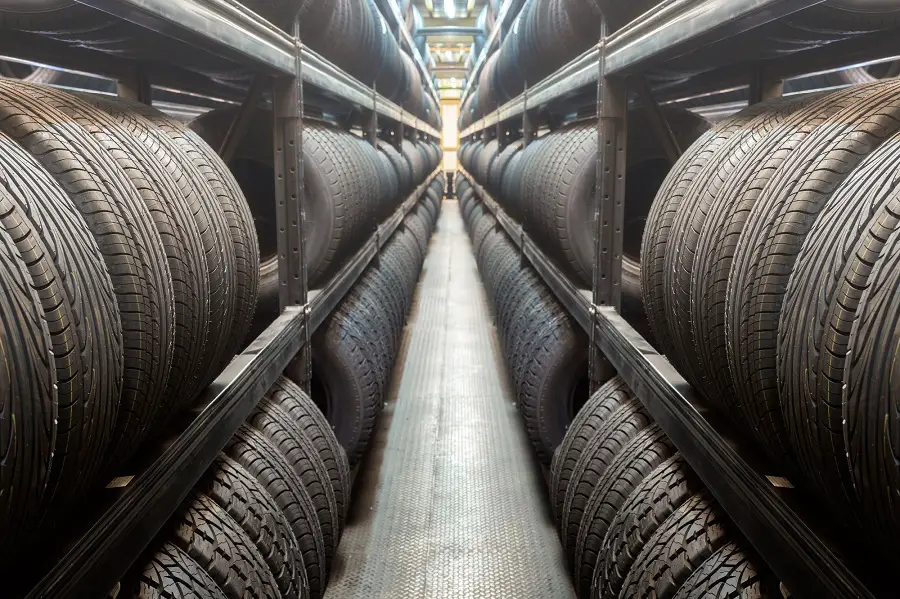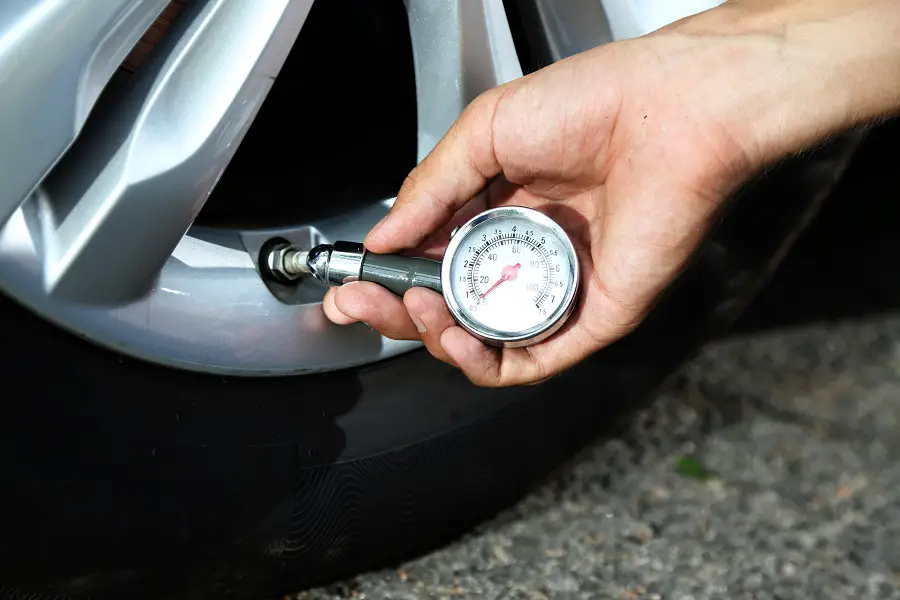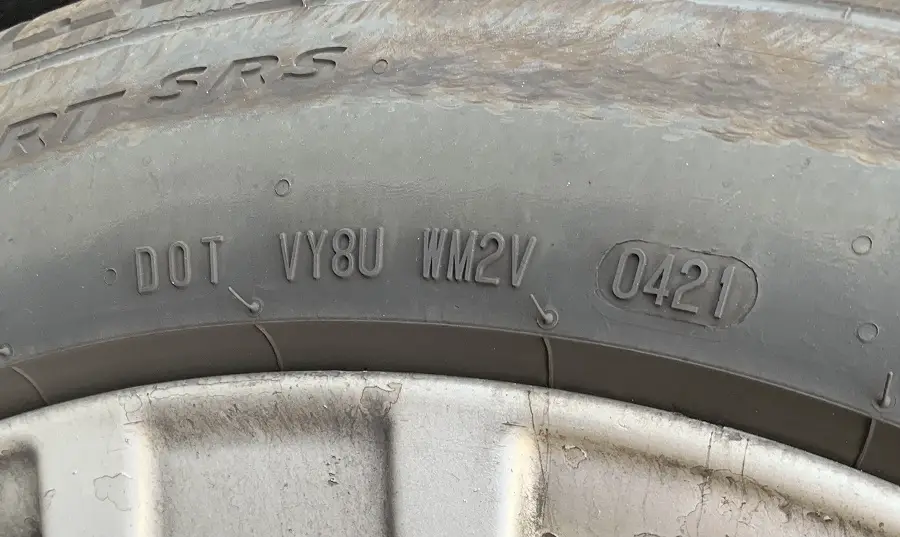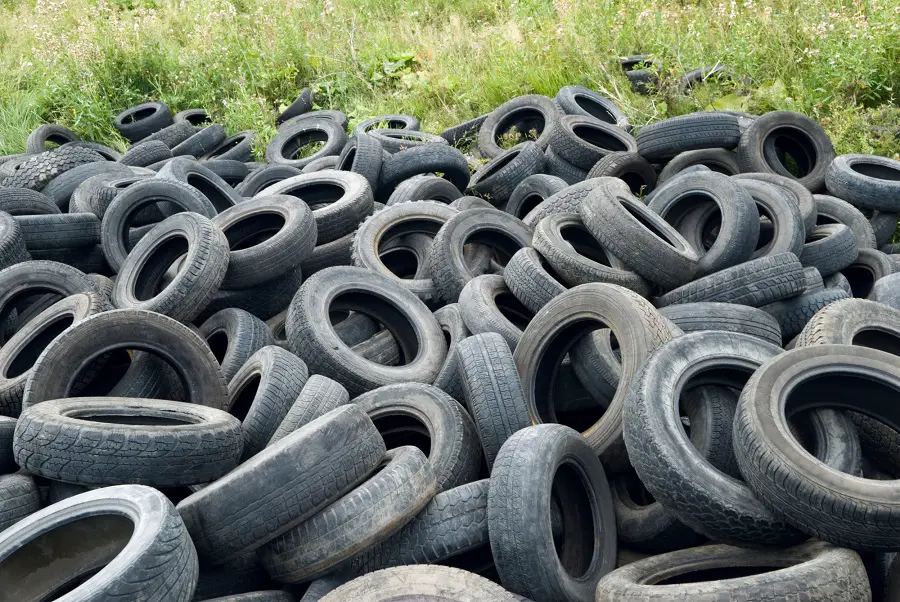In order to relax I often watch YouTube videos. My playlist and subscribed channels are full of automotive themes (I’m putting together a list of my favorites and will link to it once it’s done).
Whether it’s rebuilders, car flippers, racers or fabricators, I’m drawn to anything about cars or motorsports in general.
One of my favorite channels will find old & abandoned cars, will purchase them and will try and get them going. Often he’ll get them running and will drive them home which is usually quite far (300-600 miles).
As long as the tires are holding air, he’ll usually drive most of that distance on the tires that are already on the car. This is something that seems so dangerous to me.
Having grown up and lived in the Southwest most of my life, I know that a car that’s been sitting for 10-15 years would have tires that were so cracked and damaged that they most likely wouldn’t hold any air at all.
But he drives on them somehow. Maybe he knows something about car tire dry rot that I don’t know. So I set out to explore everything about dry rotting in tires and what you can do about it.
What Can Cause Car Tire Dry Rot?
Tires get dry rot when they are left out and exposed to harsh weather conditions such as sun, rainfall, or wind. Exposure to these elements may cause damage to the tires’ exterior and the surfaces where it is attached. Extended exposure in a dry environment like this can lead to rot decay.
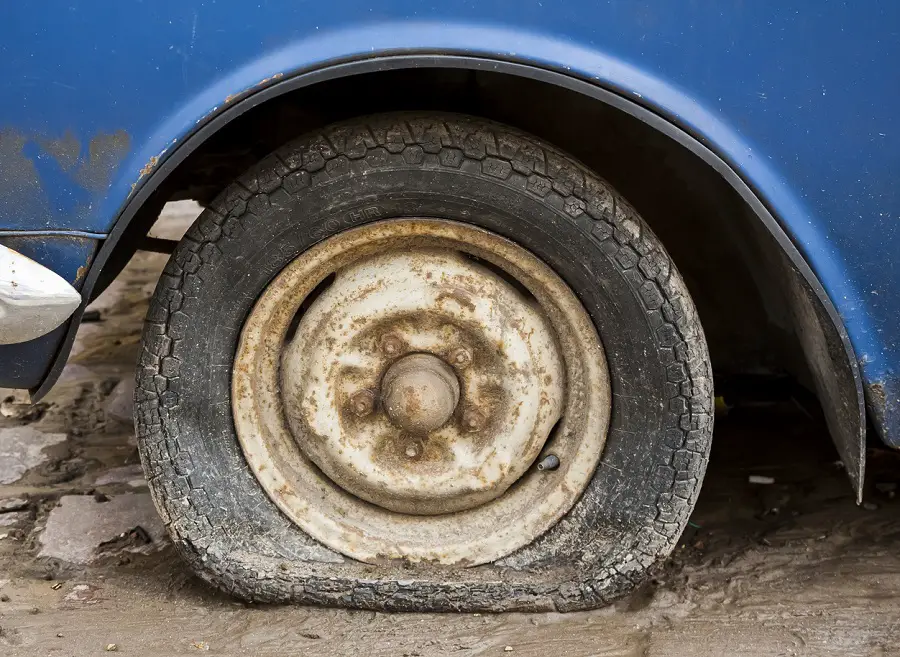
This is why it’s often called dry rot as it’s something that primarily occurs in more arid places – but it’s not limited to the desert – dry rot happens to tires in all conditions with enough time & exposure.
However, those aren’t the only things that can contribute to dry rot in tires. In fact, several factors contribute to tire dry rot and we’ll go through them right away.
Sun Exposure
Overexposure from sunlight can blister and crack tires which expose their internal layers, causing decayed surfaces. Blistering occurs when air bubbles appear on a tire’s surface due to exposure to intense ultraviolet rays from direct sunlight resulting from exposure for a prolonged period.
This eventually leads to cracking on the outside of a tire which can lead to more intense tears on the surface. Or chunks of tire that will separate from the belting.
Weather
Most rubber compounds are slightly porous. This means that exposure to wet conditions, dry conditions or cycles of both can impact your tires.
Weather can play a vital role in determining the life of our vehicle tires. For example, rainwater can damage a tire and lead to dry rot when the rainwater seeps through a tire’s exterior, corroding its steel cords with rust.
A tire can also get damaged from snowfall due to moisture build-up inside the tire’s rubber walls. Additionally, water can freeze and expand, causing the tire’s walls to crack.
Extremely hot weather conditions can also damage tires. Exposing our tires for several months in extremely hot weather can cause them to dry and crack. When this happens, the tire loses its shape, making it ineffective and dangerous.
Finally, strong winds can lead to dry rot in tires by blowing abrasive materials that scour and wear out their surfaces, eventually leading to cracks and holes on the sides of the tire. This then exposes the tire’s inner components to external sources of damage.
This damage is what leads to dry rot and, if left unchecked, can cause severe damage and dangerous conditions, especially when driving.
Harsh conditions can make dry rot appear quicker and more severe.
Poor Maintenance
Poor tire maintenance can also cause dry rot. We must do maintenance regularly for our safety and to keep our tire’s quality high throughout our vehicle’s lifespan. We ought to perform periodic checks on our car such as:
- Check your tire pressure during every gas refill and ensure that the tires don’t sit flat for extended periods of time.
- Rotating tires every few months or after every few thousand miles
- Checking our tire’s condition for any cracks.
If we have a maintenance issue with our tire, we must take care of the issue right away. The best way to do this is always to replace the tires immediately when we see any damages to them. This will help prevent accidents like blowouts while driving.
Age of Tire
Does age cause tire dry rot? Yes.
As the tire ages, the chemical components of the tire rubber break down. This leads to wear and tear on the tire’s surface, making it more susceptible to damages that can lead to dry rot. Tire dry rot can occur in as little as five years under arid conditions.
How long until tires dry rot normally? Usually about eight years in a mild climate. Less than 5 in a harsh climate.
The rubber compound in tires doesn’t do well in the dryness and excessive heat of the desert or at high elevations. These environments will wear the tires more quickly.
However, it usually only happens if we reside in a dry environment. It’s caused by the lack of humidity in the air, which causes cracks and splinters that promote decay.
Corrosive Materials
If the road we are driving on contains corrosive elements like salt and chemicals that seep through the tire’s surface, it can damage its rubber walls and cause rot to set in. Be sure to wash our tires regularly to remove these chemicals.
If we’re wondering, “does tire shine dry rot tires,” the answer is no. These chemicals are meant to be used on tires. They work with tire manufacturers to formulate their products to meet the industry standard to not cause degradation.
Improper Inflation
It would be best if we inflate our tires properly to prevent dry rot. Underinflation is a leading cause of dry rot because it exposes the tire’s inner layers. This exposure leads to rust and corrosion over time.
Underinflation or overinflation can both cause premature wear. Worn-out tires are weak and weak tires are more prone to dry rot and other damage. (check out this post on how to check the pressure in your tires if you need help)
Fill underinflated tires as soon as you find they’re getting low.
PRO Tip
If you plan on parking your car for an extended period of time, it’s always a good idea to put it on “blocks” or jack stands so that it’s just off the ground. This will allow the tires to remain full without the weight of the car on them.
This will help them stay full longer as well as keep the tires from cracking or getting out of shape due to the weight of the car.
Incorrect Wheel Alignment
When our car is out of alignment, its tires wear unevenly. You’ll see it on the tire as it will have sections of the tire that are bald where the rest of the tire tread is fine. (“Bald” refers to worn tires that have lost any sign of remaining tread)
You usually find this wear on the inside or outside of the front tires.
This leads to weakened tires that expose the tire’s inside layers to external factors that lead to dry rot. Again, we can have this checked at a local garage, tire shop or dealership.
How Do We Identify Tire Dry Rot?
If our tires have gotten damaged over time due to any of the factors mentioned above, we should check them over. Identifying what causes rot in tires will prevent us from being a victim of accidents caused by blowouts.
While small cracks on the outside of the tire, near the tread on the sidewall, is fairly common on tires over a couple of years old, larger cracks or chunks of rubber separating from the tire are dangerous and should be looked at or replaced.
Big cracks or major discoloration (gray tires, instead of black) are signs of dry rot.
Here are some common symptoms that indicate we may have dry rot in our tires:
- Cracks or holes on sidewalls that expose its inner components to damage
- Rims that are rusted or corroded with rust
- Cracked tires exposing steel cords
- Discoloration on the tire’s face
How to Protect Against Dry Rot & Extend the Life of Your Tires
Avoiding bad weather conditions like strong winds and rainfall will let us prevent tire dry rot. Also, if we plan to park our car for an extended period, we have to make sure that we park it in a covered area where it is not exposed to the weather or strong, continuous sunlight.
We can also cover our tires with heavy blankets or cloths to protect them from sun exposure and rain damage which will help prevent tire dry rot.
I’m sure most of you read that and thought “I don’t want to be that one guy in the neighborhood who has blankets covering his tires!”. If that’s the case, it might be the motivation you need to clean out your garage and start parking in there or get some “official” tire covers (like these found on Amazon).
If you keep your car out of the elements, it will extend the life of your tires (not to mention it can protect from hail damage, wind damage and keep your paint looking fresh).
What to do if our Tire has Dry Rot?
If your tire shows signs of dry rot, you should change it as soon as possible. Dry rot can be very dangerous because the rubber is compromised enough that air pressure isn’t distributed adequately throughout the tire.
A small puncture or cut in a tire with dry rot can cause a blowout, which could result in loss of control of our vehicle and risk for serious injury.
If we can’t take our tire to a tire dealer right away or change our tire immediately because we’re driving, there are a few things to do:
- Ensure that the car is pulled as far away from traffic as possible and put on the hazard lights.
- If the vehicle is equipped with a spare tire and jack, follow the instructions included with our car to change the tire.
- If we don’t have a way to change the tire, we should try to call a tow truck to either help us change the tire or have the car towed to our nearest tire shop.
Can you Continue to Drive on Old, Dry Rotted, Tires?
You shouldn’t, but you can.
Much like my favorite YouTube influencer, you can drive on most tires as long as they hold air. But it’s not very safe.
If you “have to” drive on tires that hold air but have cracks, and are probably misshapen, you can do a few things to keep yourself safe.
- Don’t drive crazy. Sure, you can do a burnout or two, but you shouldn’t try and do any autocross or take corners at high speed.
- Slow down. If you do need to drive, don’t drive too fast. Especially if the tires have chunks of tread ready to break off. Keep it in the 40 or 50 miles per hour range – if the car can even do that.
- Check the pressure frequently. Dry rotted tires will leak air faster than fresh ones. You’ll want to check the pressure at regular and frequent intervals, in the beginning, to make sure they’re holding air.
- Add some Fix-a-Flat or another sealant in them to plug some of the holes that may be leaking slowly. We discussed sealants at the end of this article about using a bike pump to pump up a car tire.
Tire Companies design their tires to be pliable over a wide range of weather conditions. But there are limitations to the abilities of the material.
You shouldn’t risk a tire blowout by driving on tires that are rotten. Tire failures happen with new tires all the time – it’s best to not press your luck by driving on bad tires to begin your trip.
Can you Fix or Repair Tires That Have Dry Rot?
Not really.
You can extend their life a bit by doing the things mentioned above. But there isn’t really a way to reverse the aging process.
Just like in humans, once tires age and start to crack, dry out and change shape, you can’t do much to reverse it. You can only handle them with care and wait to bury them.
Of course, I’m kidding a bit and took the analogy a bit too far. You shouldn’t bury old tires (we wrote about what to do with old tires here).
Ultimately, your best option is to get a set of new tires or used tires that have some life left.
Good luck & happy travels!


